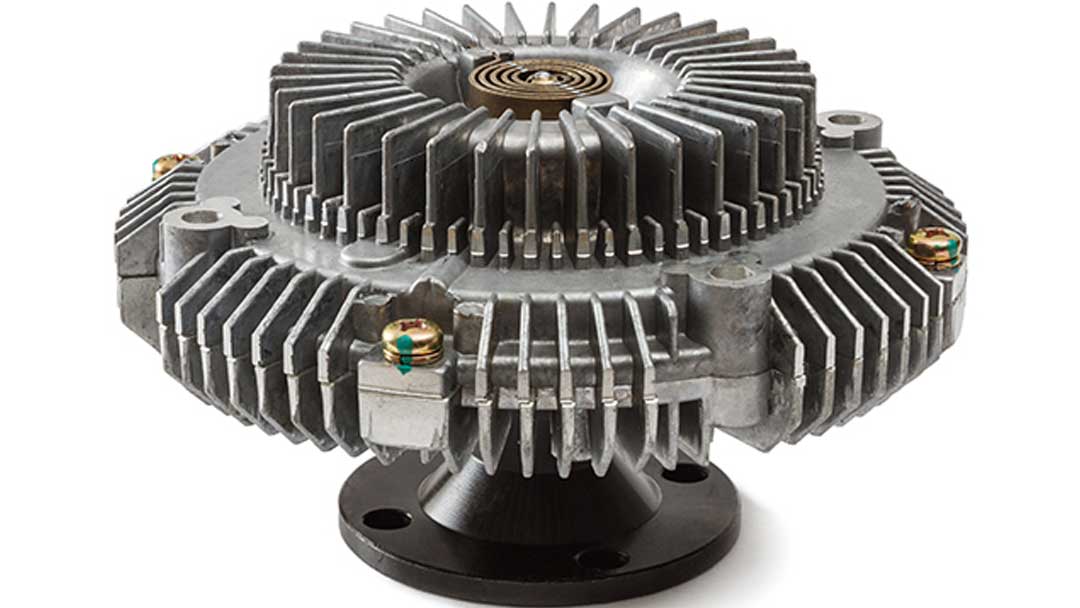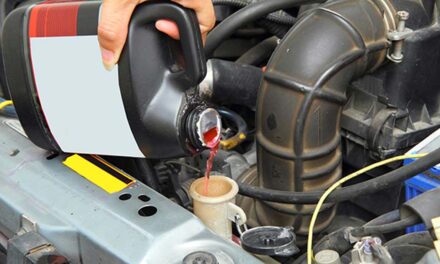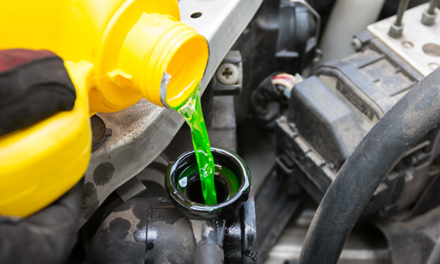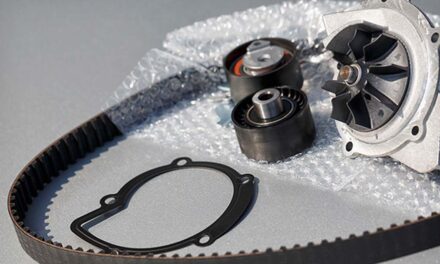Engine cooling fan clutches are found on conventional rear-wheel drive vehicles with the front of the engine facing the radiator.
There are essentially two types of fan clutches, thermal and non-thermal. Non-thermal clutches are less common and operate continuously at 30 to 60 percent engine rpm. They aren’t as expensive but they’re less efficient, robbing power from the engine and lowering the fuel economy.
The most common is the thermal fan clutch. It has a thermally activated spring in the front. When the engine temperature rises, the spring opens a valve allowing silicone oil from a reservoir in the clutch to fill a cavity, causing the fan to increase speed. When the engine temperature drops, the spring closes and captures the silicone in the reservoir. This causes the fan to release and freewheel, removing drag from the engine. It is effective at increasing fuel economy. Late-model vehicles have two types of clutch fan attaching methods. One clutch uses a single large nut that threads onto the water pump shaft. The other type bolts onto the water pump flange with multiple fasteners.
Testing Procedure
- With the engine off, spin the fan by hand. Some resistance indicates the clutch is working. If the fan spins freely with no resistance, the clutch is bad.
- Wobble the fan. If it wobbles, the bearing is bad and the clutch needs to be replaced.
- If the fan has heavy resistance or is frozen and will not turn, it is also bad.
- Visually look for signs of silicone radiating from the center of the clutch, indicating a failure.
- Start the engine and observe the fan speed. If the fan freewheels when cold and do not pick up speed as the engine temperature rises to normal, the clutch has failed.
- If in doubt replace the fan clutch.Tools Needed
Set of wrenches
- Pulley holding bar to keep the pulley from turning as the nut loosens
- Set of sockets and ratchet
- Replacement Procedure
- Install the pulley-holding bar by placing the ends over opposing bolts on the water pump pulley.
- Removal of the fan shroud may be required.
- DO NOT USE AN AIR HAMMER TO LOOSEN THE NUT. This will only damage the water pump bearing resulting in a premature failure.
- Using the appropriate size wrench, turn the large fan clutch nut counterclockwise to loosen it. Once loose, spin the fan by hand and the nut will walk off.
- Lay the fan and clutch on a bench with the fan clutch face down. Remove the bolts securing the clutch to the fan. Replace the clutch and tighten the bolts.
- Once separated check the fan for any type of failure: bent or cracked blades, or loose rivets attaching the blades to the base. If in doubt replace the fan blade.
- Replace the fan and clutch in the reverse order of removal.
- The bolt-on type fan and clutch are removed by unbolting the unit at the water pump pulley using a wrench. Fan clutch replacement is the same as above.









![[Vehicle Fitment]: Compatible with Buick Allure 05-10, Enclave 08-20, LaCrosse 05-08 10-16, Rendezvous 04-06 & Cadillac ATS 13-19, CTS 05-19, SRX 04-16, STS 05-11, XTS 13-19 & Saab 9-3 06-09, 9-4X 11, 9-5 10-11 & Saturn Aura 07-09, Outlook 07-10, Vue...](https://m.media-amazon.com/images/I/41WKoNzHalL._SL100_.jpg)